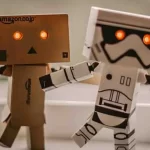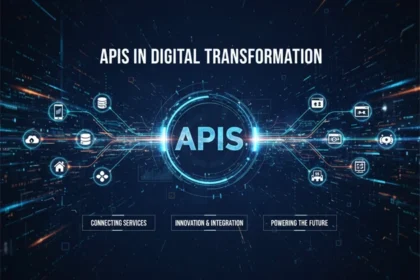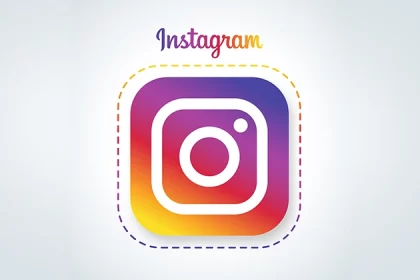Suddenly the world of technology is all about the Internet of Things or the IoT. It is growing fast, and people’s daily needs will depend on the internet quickly. The tech phenomenon no longer merely connects smartphones and computers. Numerous devices are now used to serve consumers to a large extent in daily life.IoT’s Impact in the e-commerce.
The IoT is an ecosystem of smart devices that have access to the web and can communicate with one another. IoT has changed both online commerce and e-commerce development services considerably. It’s not just from the consumer side; it’s also from the inner ones. In e-commerce, processes such as logistics, inventory management, and so on generate more productivity and streamline processes.
How is IoT shaping e-commerce’s future?
Within this year, e-commerce revenue is expected to reach over $300 billion. Nevertheless, this amount cannot be achieved without the IoT. It has entered every sector and industry. However, its effect on e-commerce is astounding. It has revolutionized the online business in many ways. Customer service has never been more systematic and customized, leading to unrivaled revenue that continually grows. It created and continues to develop a digital footprint, connecting customers, things, and processes. Digital footprint provides a very customized customer experience, builds a more transparent supply chain, and boosts revenue opportunities. Business organizations now opt for an e-commerce development company that can produce IoT-integrated solutions to increase their online presence.
Internet of Things Influence on e-commerce
The interconnected things, including appliances and machines and the Internet, among others, act as the highway connecting these things. Retailers’ interest in IoT is growing due to digital connectivity. Devices that were previously connected through a close circuit can now communicate via an internet network. The IoT has had such a massive impact on the e-commerce environment that it is expected the investment will hit $2.5 billion this year. Furthermore, despite the pandemic the world is facing now, the IoT will continue to climb by 2021.
Significant Forms in which E-Commerce Benefits from IoT
The IoT technologies are everywhere, from smart homes to wearables to autonomous vehicles and even smart cities. Here is how interconnected issues have helped the e-commerce industry and e-commerce development services.
Customer Service was Tweaked: Big data is used by e-commerce organizations to make customized and informed decisions. Besides that, they also do an analysis of data from the various forums and social media platforms as it helps to understand the customer needs. The IoT could help retailers improve their customer experiences. First, they should keep track of customer preference for specific items, buying habits, and ordering history. It helps them improve customer engagement, leading to improved customer satisfaction and higher revenues, of course. The results achieved through IoT analysis allow retailers to supply offers as well as provide options according to preferences and timing.
Greater Inventory Management: Managing inventories might sometimes be a real cause of headache for e-commerce organizations. It could accommodate hundreds of thousands of products and categories. Taking stock of all of these can be daunting and a repetitive job because even a small counting mistake may lead to high rates of uncertainty. IoT sensors and RFID tags may be customized to ensure adequate inventory management. Keeping tabs of whereabouts in real-time means a more streamlined flow. The IoT enables thorough monitoring of incoming and outgoing commodities, meaning it could eliminate errors and human intervention. There are also occasions when the products run out without anyone realizing it. The smart shelves IoT-enabled are tools that keep out inventory errors and track the number of products sold.
Smart Logistics: Without the correct logistics channel, the field of e-commerce is not complete. A minor weakness in this channel may represent a setback. It is here that IoT comes to rescue by ensuring products can travel seamlessly from place to place. IoT tech cold plays a crucial role in holding product tabs from manufacturing through to final distribution. GPS and RFID or Radio-Frequency Identification could allow e-commerce companies to track the location of commodities at any moment. A reader captures digital data that is encoded in RFID smart labels or tags through radio waves. Logistics management becomes very efficient since IoT allows the speed and route of items to be delivered effectively to be managed.
IoT in Web Development: Web design and development are the two main areas affected by the IoT in e-commerce. It is essential to design great looking websites on different-size screens. That means IoT has many web design and user interface demands. Thus web design and development can be integrated with the IoT. For e-commerce sites, UI is critical, so a web-based user interface for an IoT app should be quick, intuitive, and clean. E-commerce sites will be faster, reducing response time between an IoT-enabled website and a web server using incremental communication design techniques.
Better Opportunities for Marketing and Promotion: IoT-enabled devices go far. The e-commerce industries regard DaaS or Data as providers of service. They collate valuable customer data, which could be different ways by marketing ion. The data could also support targeted ads, backed up by the integrated apps, resulting in increased consumer trust and better sales. Companies may use “smart” self-tags, otherwise known as “e-tags,” to keep customers satisfied and happy. These tags support the target market when it comes to providing promotions based on their preferences.
Conclusion
The Internet of Things is predicted to have an even more powerful impact on filed e-commerce. As more and more devices are connected and acquire intelligent features, more data would be collected, leading to an enhanced consumer experience. IoT’s impacts are far-reaching.










